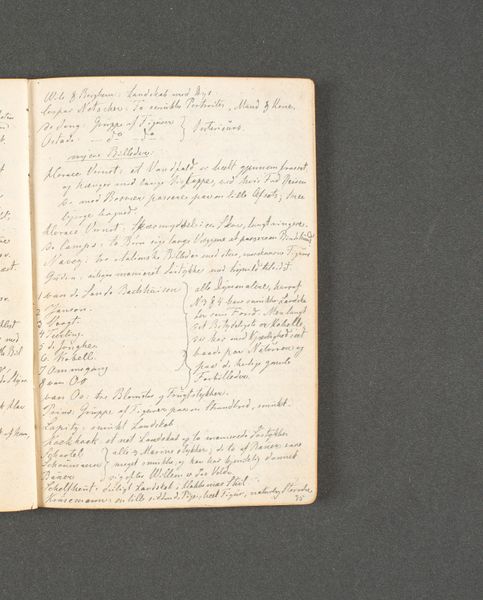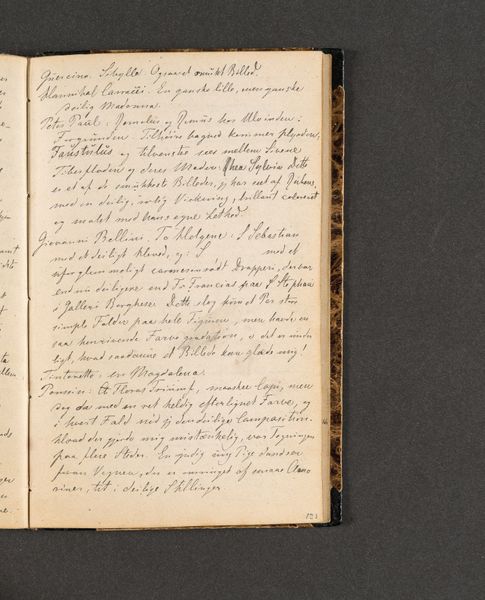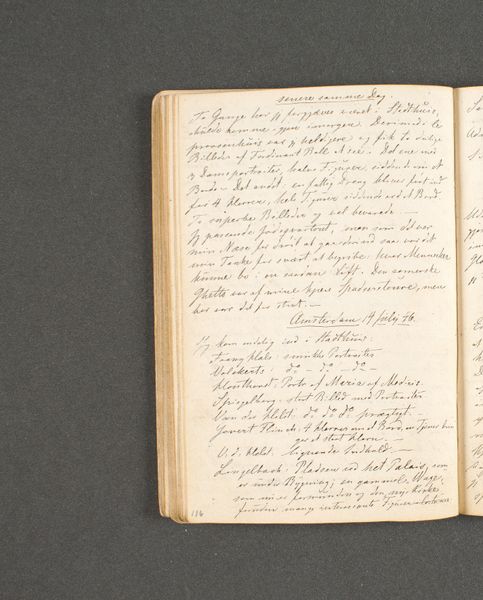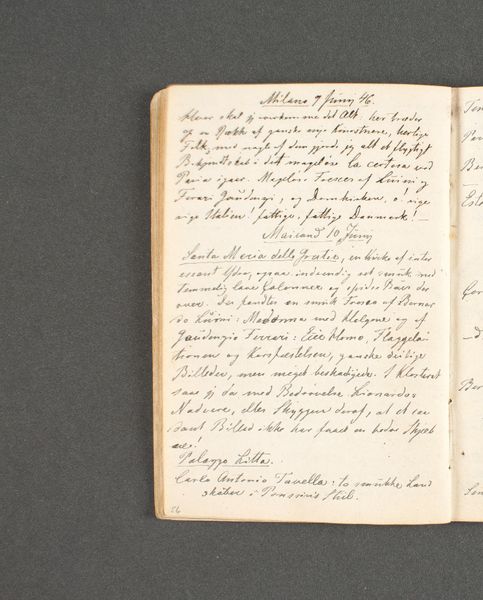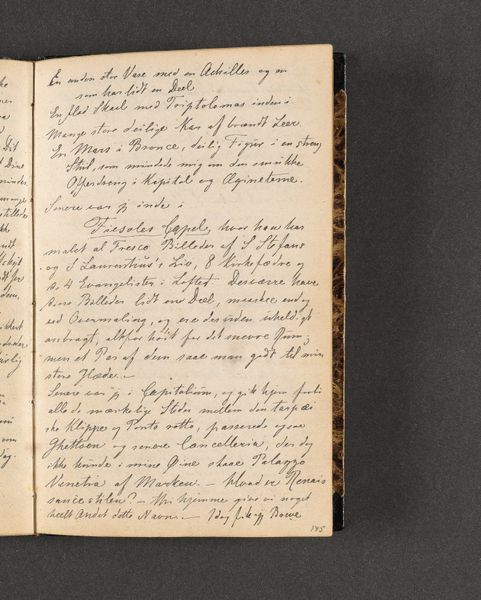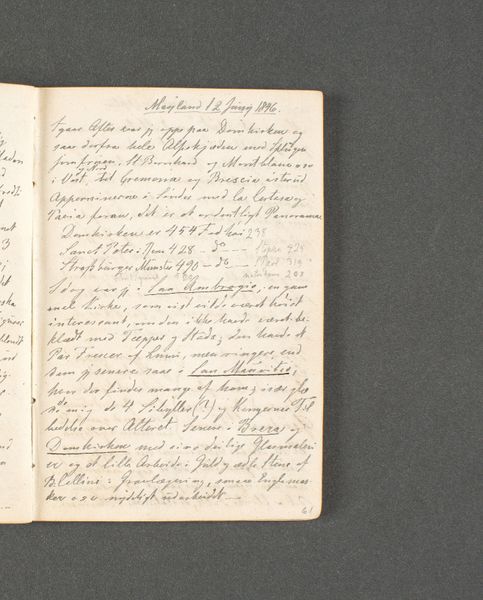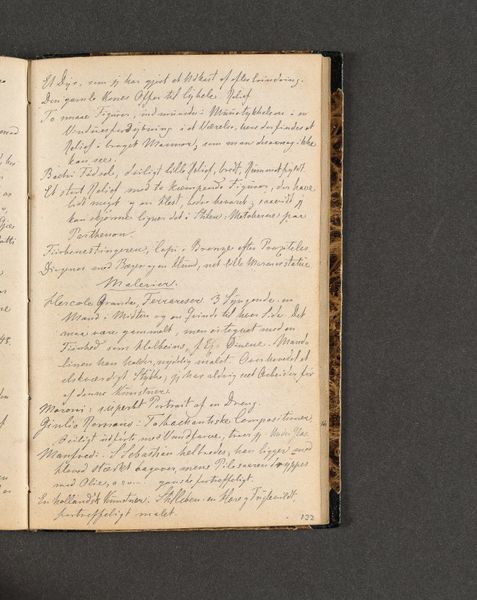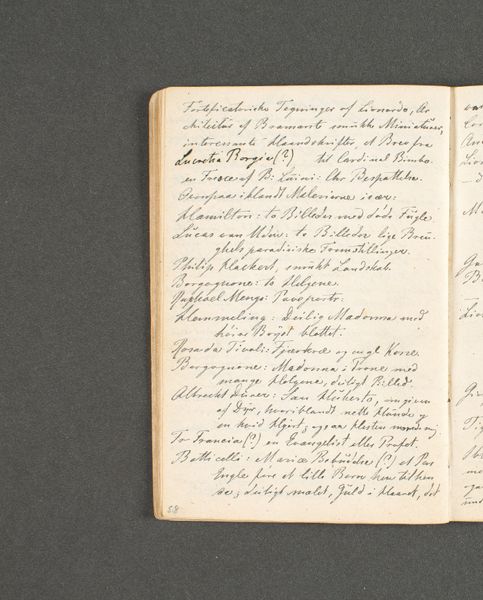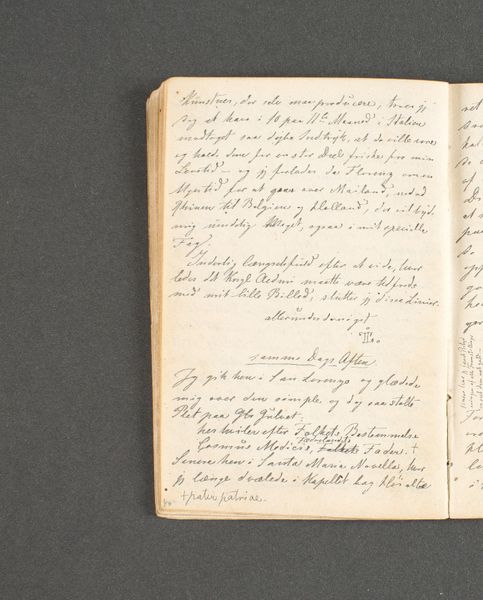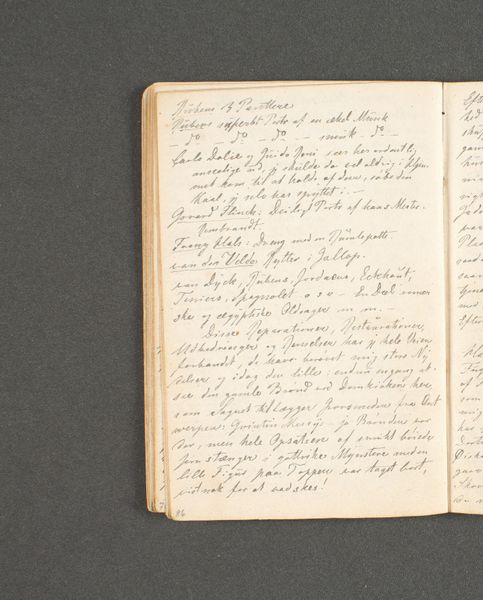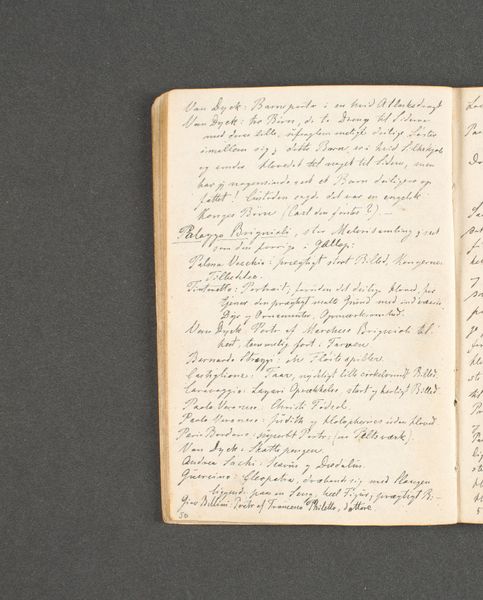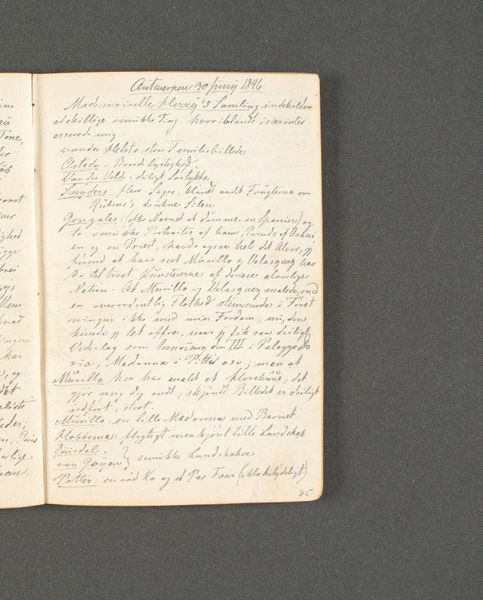
drawing, paper, ink, pen
#
drawing
#
book binding
#
narrative-art
#
sketch book
#
hand drawn type
#
personal journal design
#
paper
#
personal sketchbook
#
ink
#
journal
#
romanticism
#
sketchbook drawing
#
pen
#
sketchbook art
#
design on paper
#
miniature
#
small lettering
Dimensions: 131 mm (height) x 89 mm (width) (bladmaal)
Curator: Here we have a fascinating piece: a page from Johan Thomas Lundbye’s travel journal, titled "Rejsedagbog. Antwerpen og Gent," created in 1846. It's a beautiful example of Romantic era travel documentation. Editor: My first impression is one of intimacy and almost hushed curiosity. The script is dense, the paper aged—it feels like uncovering someone’s private thoughts, handwritten observations from a distant past. Curator: Exactly! Lundbye was meticulous, recording not only visual sketches, but also detailed notes. He used pen and ink on paper to document his travels, in the traditional spirit of the time, when painting outdoors wasn’t possible. It highlights the importance of travel journals to the cultural development of Romantic painters and draftsmen, who later integrated notes in their works. Editor: I'm drawn to how it reflects a very particular kind of 19th-century travel—scholarly, reflective, more concerned with internal experience than external spectacle. It makes me think about access, who could afford such journeys, and whose experiences are being centered. Curator: Absolutely. The journal provides insight into Lundbye's personal and artistic development, allowing us to explore the cultural lens through which he viewed the world. It allows for speculation about his personal experiences while engaging with major sociopolitical moments happening in Europe, as his writings imply in terms of prices for accomodation or commenting on other artists’ painting techniques. Editor: Thinking about that personal lens makes me wonder about the potential biases or blind spots present in his observations, particularly regarding the communities and cultures he encountered as a visitor. How much did he consider those social systems? Curator: It’s a pertinent point. Understanding the societal context in which Lundbye operated helps us interpret his work, accounting for the prevailing cultural perspectives that shaped his views and, thus, the narrative conveyed through his artwork. We get a chance to better read and contextualize the history through the lens of personal narratives, no matter their own embedded issues and historical problematics. Editor: Ultimately, these pages serve as a powerful reminder of art’s intricate ties to socio-political landscapes. Curator: Yes, the interplay between the personal and the socio-historical adds layers of meaning and insight to our understanding.
Comments
No comments
Be the first to comment and join the conversation on the ultimate creative platform.
